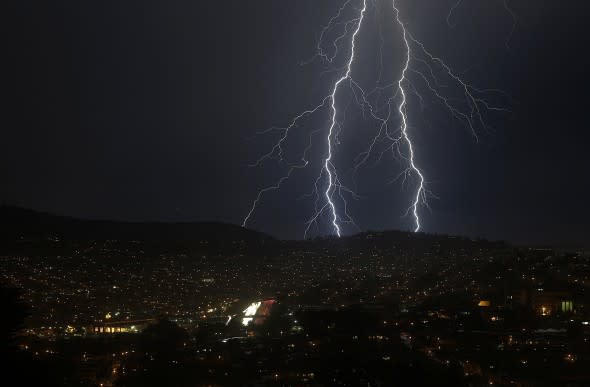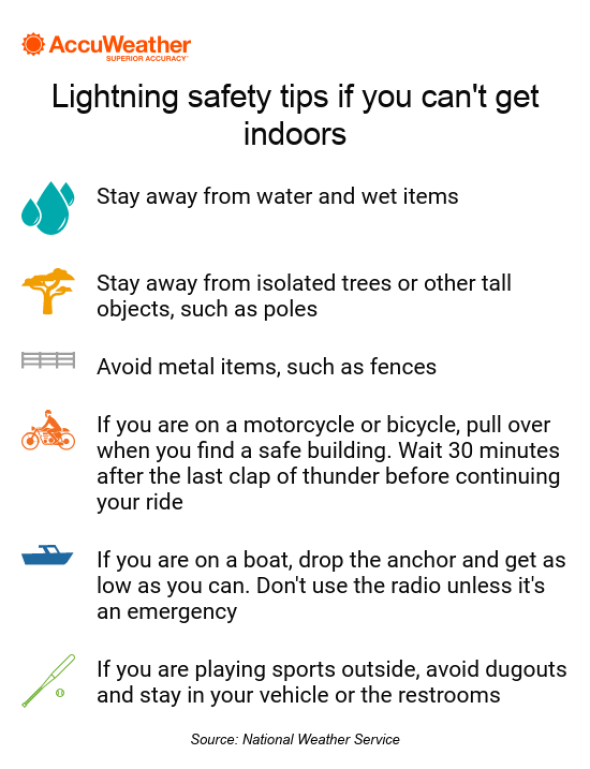Is it safe to talk on your cell phone during a thunderstorm?
Many people associate lightning dangers with being outdoors, but there are some rare cases when people have been hurt or even killed by lightning when they were indoors.
For example, a man was killed while inside a house in 2017. Investigators came to the conclusion that lightning traveled through exposed steel beams and metal tools before going through his body.
Using a landline during a thunderstorm is never safe because of its connection to an outside wire. Lightning can follow the wire to the handset and can injure the person using a landline. But what about using a cell phone?
However, there is a misconception that cell phones attract lightning, John Jensenius, lightning safety specialist for the National Weather Service, said. If someone is struck by lightning and they have a cell phone on them, it will usually melt or burn. People have taken that and blamed the cell phone, Jensenius said, but in reality it is unrelated.

Bolts of lightning are shown striking south of San Francisco, Monday, Sept. 11, 2017. (AP Photo/Jeff Chiu)
"The first thing that people should understand is that nothing really attracts lightning, but lightning does follow wires and fences and things of that nature. So if you're on a cell phone, you're not any more likely to be struck by lightning than when you're not on that cell phone," said John Jensenius, lightning safety specialist for the National Weather Service.
"The key is, though, that you want to be in safe place so that you're not struck by lightning whether you're carrying a cell phone or not," said Jensenius.
"It's the place you're located that is more of a concern than anything else. If you're near a cell phone tower, that's bad because lightning will come and hit the cell phone tower," said AccuWeather Senior Meteorologist Dan Kottlowski.
It's important to get to an enclosed shelter like a car or building, Kottlowski said. An open cover like a gazebo does not offer sufficient protection. You are always safest inside.
Besides being in an enclosed structure, be sure to stay away from electronics that are plugged in.
"Anything that's plugged into the wall is dangerous because it's connected to an outside wire," Jensenius said. A cell phone or laptop that are plugged in and charging have the same dangers of a landline.
"We have a very simple saying 'when thunder roars, go indoors,'" Jensenius said. The National Weather Service recommends staying inside for 30 minutes after you hear the last clap of thunder.

For more safety and preparedness tips, visit AccuWeather.com/Ready.

